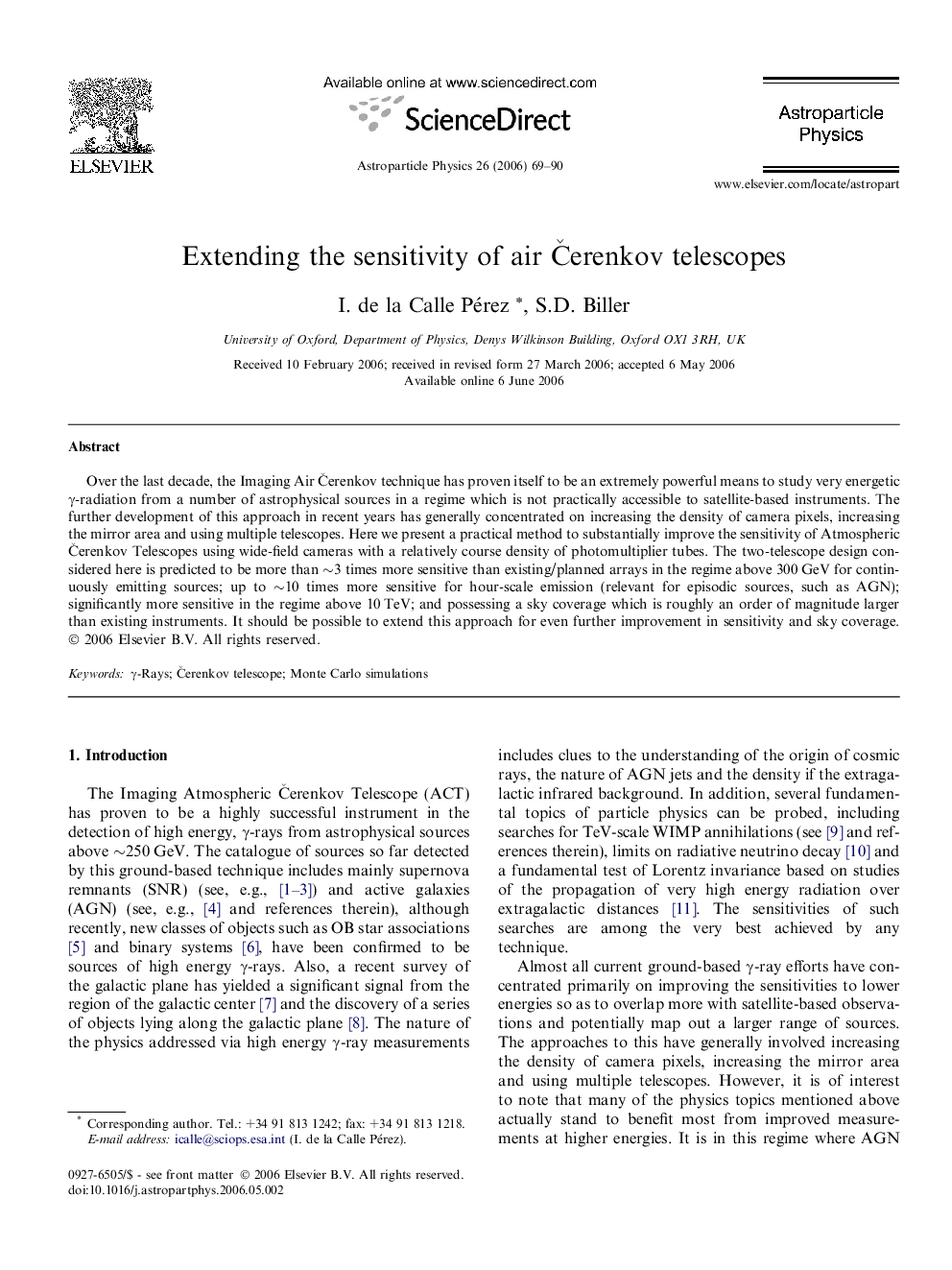| Article ID | Journal | Published Year | Pages | File Type |
|---|---|---|---|---|
| 1771618 | Astroparticle Physics | 2006 | 22 Pages |
Abstract
Over the last decade, the Imaging Air Äerenkov technique has proven itself to be an extremely powerful means to study very energetic γ-radiation from a number of astrophysical sources in a regime which is not practically accessible to satellite-based instruments. The further development of this approach in recent years has generally concentrated on increasing the density of camera pixels, increasing the mirror area and using multiple telescopes. Here we present a practical method to substantially improve the sensitivity of Atmospheric Äerenkov Telescopes using wide-field cameras with a relatively course density of photomultiplier tubes. The two-telescope design considered here is predicted to be more than â¼3 times more sensitive than existing/planned arrays in the regime above 300 GeV for continuously emitting sources; up to â¼10 times more sensitive for hour-scale emission (relevant for episodic sources, such as AGN); significantly more sensitive in the regime above 10 TeV; and possessing a sky coverage which is roughly an order of magnitude larger than existing instruments. It should be possible to extend this approach for even further improvement in sensitivity and sky coverage.
Keywords
Related Topics
Physical Sciences and Engineering
Physics and Astronomy
Astronomy and Astrophysics
Authors
I. de la Calle Pérez, S.D. Biller,
